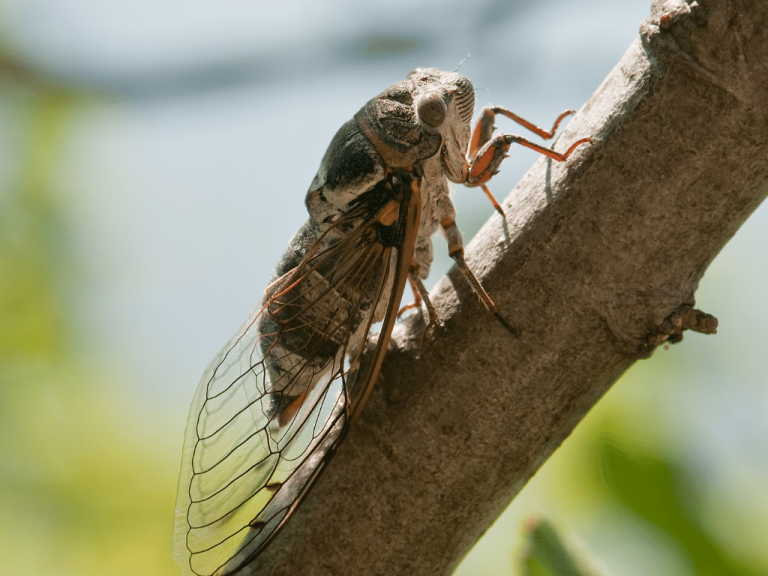Human vocalization is caused by the vibration of the vocal cords as air passes through the throat. Different tones are formed by various positions of the mouth and different movements of the tongue, lips, and teeth.
However, insect vocalization is quite different. They do not have vocal cords in their mouths, and the sound-producing parts are not inside their mouthparts.
So how do insects produce sound? Where is their sound-producing “apparatus” located?
They produce sound using specialized sound-producing organs on their bodies. Male cicadas are the musicians of the insect world (females do not sing; there is a Greek saying: “Happy is the cicada that has a mute wife”). The “chirping” sound of cicadas is produced by the abdomen of the male cicada. On the sides of the male cicada’s abdomen, there are large, round sound covers, underneath which are auditory sacs and sound-producing membranes resembling drum skins. When the muscles inside the sound-producing membrane contract and vibrate, the cicada produces sound.
The abdomen of the cicada also has resonators called air sacs. When the sound-producing membrane vibrates, the resonators resonate, and the tympanum and mirror membrane also vibrate, resulting in a loud sound. The fluctuation in the cicada’s song is regulated by the outer sound covers of the sound-producing membrane. This is similar to how humans manipulate the size of their oral cavity to produce different pitches. However, cicadas mechanically produce the same tone repeatedly and cannot produce melodious songs.
Different insects have different sound-producing parts and sound-producing mechanisms. Crickets and grasshoppers produce sound by rubbing their wings together. If you observe the wings of a grasshopper, you will notice that the left wing often overlaps the right wing. The underside of the base of its left wing has a transverse vein with teeth, resembling a small saw, called the sound scraper. On the upper surface of the right wing, just below the sound scraper, there is a pointed friction edge. When the wings are raised or separated, the friction between the sound scraper and the friction edge produces sound.
The sound-producing principle of crickets is the same as that of grasshoppers. The difference is that the right wing of the cricket overlaps the left wing, so it produces sound by rubbing the serrated edge of the right wing. When crickets are playing music, they often raise their small wings, appearing very serious and dignified.
Locusts also produce sound, but their sound-producing organs are different from those of the insects mentioned above. They produce sound by rubbing the inside of their leg joints against the longitudinal veins of their forewings. At this time, the function of the leg joint is like a bow, and the longitudinal veins of the forewing are like strings. When the two rub against each other, they produce a low buzzing sound. A locust without wings cannot produce sound at all.

